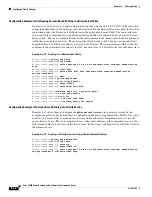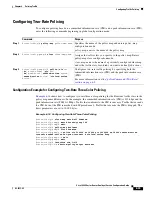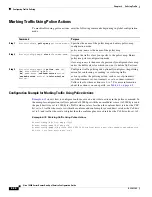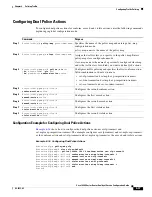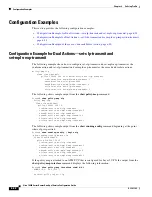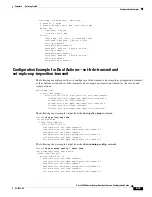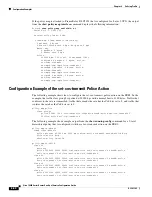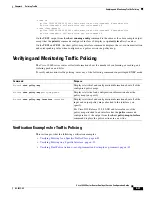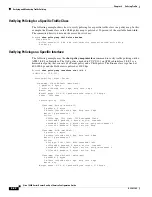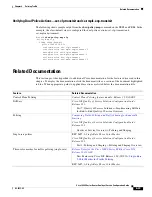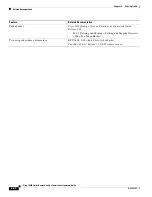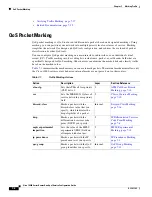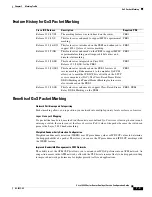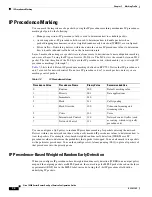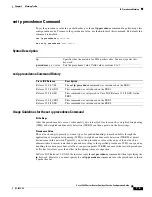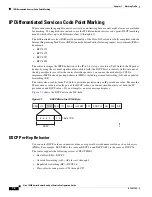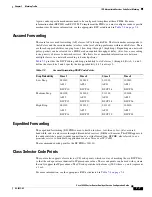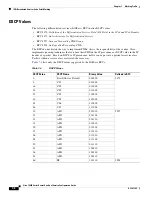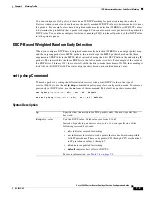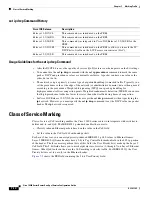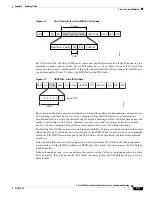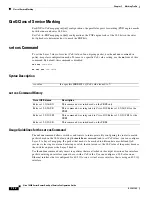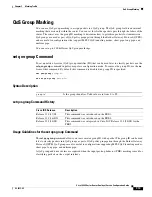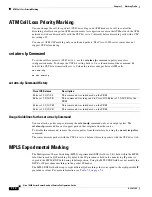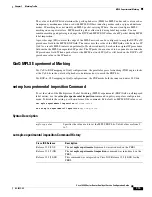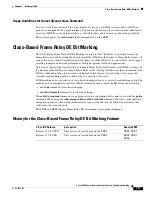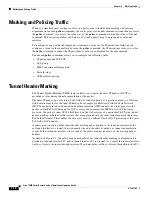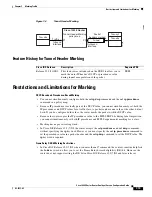
7-4
Cisco 10000 Series Router Quality of Service Configuration Guide
OL-7433-09
Chapter 7 Marking Traffic
IP Precedence Marking
IP Precedence Marking
You can mark the importance of a packet by using the IP precedence marking mechanism. IP precedence
marking helps to do the following:
•
Manage congestion—IP precedence field is used to determine how to schedule packets.
•
Avoid congestion—IP precedence field is used to determine how to handle packets when
packet-dropping mechanisms, such as weighted random early detection (WRED), are configured.
•
Police traffic—Networking devices within the network can use IP precedence values to determine
how to handle inbound traffic based on the transmission rate.
Layer 2 media often changes as packets traverse from source to destination. A more ubiquitous marking
can occur at Layer 3, using the IP type of service (ToS) byte. The ToS byte is the second byte in an IPv4
packet. The first three bits of the ToS byte are the IP precedence bits, which enable you to set eight IP
precedence markings (0 through 7).
Table 7-2
lists the 8 different IP precedence markings defined in RFC 791. Notice that IP precedence 6
and 7 are used for network control. Do not use IP precedence 6 or 7 to mark packets, unless you are
marking control packets.
You can configure a QoS policy to include IP precedence marking for packets entering the network.
Devices within your network can then use the newly marked IP precedence values to determine how to
treat the packets. For example, class-based weighted random early detection (WRED) uses IP
precedence values to determine the probability that a packet is dropped. You can also mark voice packets
with a particular precedence. You can then configure low-latency queuing (LLQ) to place all packets of
that precedence into the priority queue.
IP Precedence-Based Weighted Random Early Detection
When you configure IP precedence-based weighted random early detection (WRED) on an output policy
map and the outgoing packets are MPLS packets, the router drops the MPLS packets based on the three
experimental (EXP) bits in the MPLS label, instead of using the 3-bit IP precedence field in the
underlying IP packets.
Table 7-2
IP Precedence Values
Precedence Value
Precedence Name
Binary Value
Recommended Use
0
Routine
000
Default marking value
1
Priority
001
Data applications
2
Immediate
010
3
Flash
011
Call signaling
4
Flash Override
100
Video conferencing and
streaming video
5
Critic
101
Voice
6
Internetwork Control
110
Network control traffic (such
as routing, which is typically
precedence 6)
7
Network Control
111

